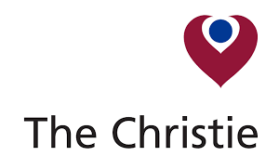Ox-1 in Substance Use Disorders
+-
There are a number of addictive behaviours that represent significant unmet medical needs and require novel treatments.
Binge Eating
Binge eating is an eating disorder where a person feels compelled to overeat on a regular basis through regular “binges” or consumption of very large quantities of food over a very short period of time, even when they are not hungry. The condition tends to develop first in young adults, although many people do not seek help until they are in their 30s or 40s.
There is a 1 in 30 to 1 in 50 chance of a person developing binge eating disorder at some point during their life and it can lead to a variety of health problems that can, in extreme circumstances, be life-threatening. Whilst more women suffer from the condition than men, binge eating is not particularly uncommon in men with the prevalence ratio of approximately 1.5 women for every man with the disorder.
Anxiety
Anxiety disorders constitute one of the most common groups of psychiatric disorders with a lifetime prevalence of 14.5–33.7%. Despite efficacious pharmacological and psychological treatments, first line treatment is often not effective.
Clinical trials using orexin 1 antagonists have demonstrated alleviation of panic and anxiety in human models of these conditions.
TheraCryf has a candidate orexin 1 antagonist at late preclinical stage targeting addictive behaviours.
DAT in Fatigue and Narcolepsy
+-
Fatigue is a feature of several chronic diseases of the central and peripheral nervous system.
The pathophysiology of central fatigue is complex and often not well-defined. Patients often define this central fatigue as a subjective sensation of weariness, increasing sense of effort, mismatch between effort expended and actual performance, or exhaustion.
TheraCryf has a candidate molecule DAT inhibitor at late preclinical stage targeting fatigue and narcolepsy.
SFX-01 - Glioblastoma
+-
Strong preclinical data has been generated in a new solid tumour indication, glioblastoma (GBM), with further preclinical work underway and designs for a Phase Ib/IIa trial being assessed.
Glioma is the most common form of brain tumour affecting around five per 100,000 people. The more severe, grade IV classification, glioblastoma, is a very serious form of brain tumour representing 45% of all cases and has a poor prognosis with median survival of around 14 months. The five-year survival of the severe grades is 5%.
The data generated for SFX-01 in standard preclinical models and orthotopic models (where glioma cells are implanted in brain tissue representing a more disease-relevant model) show tumour shrinkage and significantly extended survival times. SFX-01 was also found to potentiate (i.e. substantially increase) the therapeutic effect of radiotherapy in these models.
The therapeutic options for glioma are limited to surgery, radiotherapy and the one drug widely available, temozolomide. There is a clear unmet need for more treatments for use in conjunction with the current standard of care.
TheraCryf is collaborating with Dr Marjolein Geurts, neuro-oncologist at the Erasmus University Medical Center on a project that will investigate the use of SFX-01 in pre-clinical glioblastoma models, followed by a clinical Investigator Sponsored Study (ISS), aiming to establish the presence of the drug in human brain tumours and engagement with relevant molecular targets in excised tumour tissue. The studies, which are funded by a grant awarded by the KWF Dutch Cancer Society, formally commenced on 1 October 2023.
The US Food and Drug Administration (”FDA”) has granted an Orphan Drug Designation (“ODD”) for the use of SFX-01 to treat malignant glioma. This is usually granted when there are fewer than 200,000 patients with a given disease in the United States and there is a scientific rationale for potential use of the product in that condition. As well as recognising the relative rareness of a disease, OD confers intellectual property cover to an investigational drug in the form of data protection at the time of approval of a new drug application, which is additional to any patent cover in force. Tax credits are also possible on eventual US sales of an approved orphan drug.
SFX-01 - Neurodevelopmental Disorders
+-
Autism spectrum disorder is a group of neurodevelopmental disorders (NDDs) currently diagnosed based on core behavioural features, without specific biological criteria.
Previous studies with other sources of sulforaphane have shown evidence of clinical efficacy in improving symptoms of ASD (e.g. Singh et al 2014). However, patient heterogeneity provides a challenge in identifying those individuals most likely to respond to therapy.
Stalicla specialises in the identification of specific phenotypes of autism spectrum disorder (ASD) and has a unique, proprietary technology to identify ASD patients who are most likely to respond to SFX‐01. This screening approach has already been used successfully to identify ideal patients for other ASD drug trials and is a key differentiator for Stalicla in developing drugs for such a wide spectrum disorder as ASD.
TheraCryf’s partnership with Stalicla will enable the targeting of patient groups most likely to benefit from SFX‐01, not only de‐risking the clinical development but potentially bringing a therapeutic option to those individuals who are currently underserved, in a quick and efficient manner.







